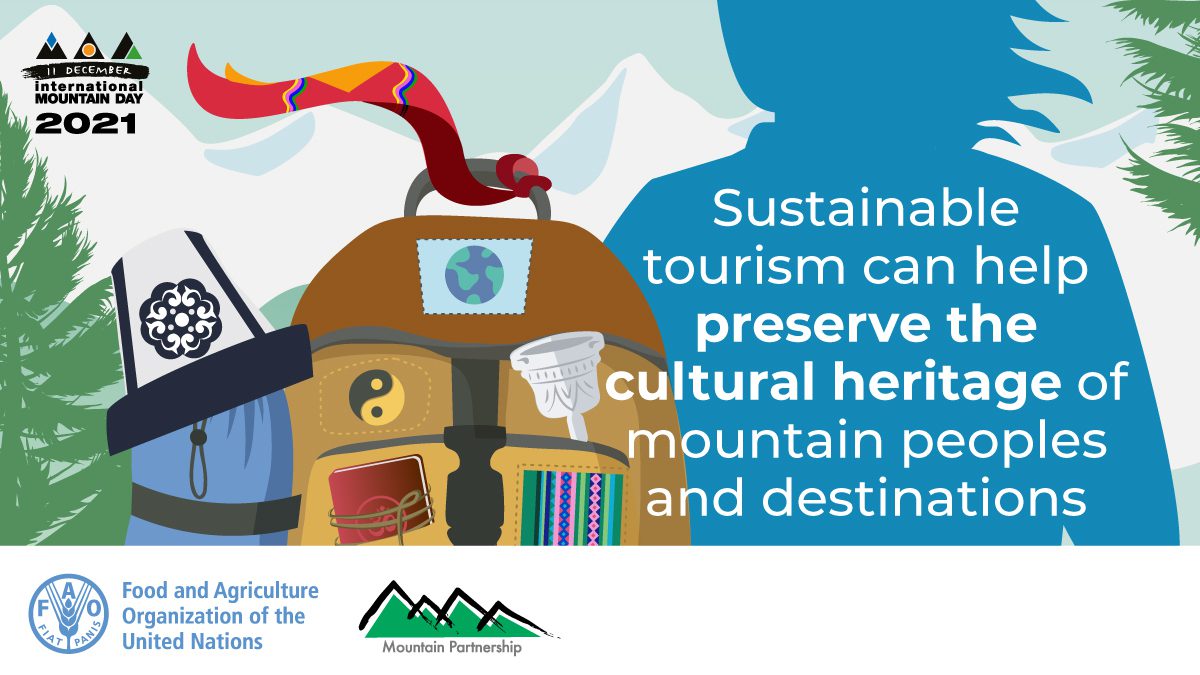Eco-tourism contributes to the preservation of cultural heritage by promoting sustainable tourism practices that respect and support local cultures. It encourages responsible travel and minimizes negative impacts on the environment and local communities. Eco-tourism initiatives prioritize community-based tourism, allowing visitors to interact with and learn from local communities, thus safeguarding intangible cultural heritage. These projects also involve local communities in tourism development, preserving their cultural identity and promoting sustainable practices. The benefits include increased awareness and appreciation for cultural heritage among tourists, economic opportunities for local communities, and the preservation of intangible cultural heritage through direct engagement with visitors. However, challenges include balancing commercial interests with authenticity preservation and ensuring equitable distribution of benefits.
Key Takeaways:
- Eco-tourism can play a crucial role in preserving cultural heritage by generating revenue for local communities and encouraging the preservation of traditional practices.
- Engaging with local communities and respecting their customs and traditions is essential for successful cultural preservation through eco-tourism.
- Eco-tourism should prioritize sustainable practices to minimize negative impacts on the environment and cultural sites, ensuring long-term preservation efforts.
- Education and awareness programs are necessary to inform tourists about the significance of cultural preservation and encourage responsible behavior during their visits.
- Collaboration between stakeholders, including governments, local communities, and tour operators, is vital for effective cultural preservation through eco-tourism initiatives.
How does eco-tourism contribute to the preservation of cultural heritage?
Eco-tourism plays a crucial role in the preservation of cultural heritage by promoting sustainable tourism practices that respect and support local cultures. By focusing on responsible travel and minimizing negative impacts on the environment and local communities, eco-tourism encourages visitors to engage with and learn about different cultures, traditions, and customs. This interaction leads to increased appreciation and understanding of cultural heritage, fostering its preservation.
One way in which eco-tourism contributes to cultural heritage preservation is through the promotion of authentic experiences. Eco-tourism initiatives often prioritize community-based tourism, where visitors have the opportunity to interact directly with local communities and participate in their traditional activities. This allows for the transmission of cultural knowledge from one generation to another, helping to safeguard intangible cultural heritage such as oral traditions, performing arts, and traditional craftsmanship.
Furthermore, eco-tourism projects often collaborate closely with local communities in developing tourism activities. This involvement ensures that decisions regarding tourism development are made collectively and take into account the perspectives and needs of the community. By empowering local communities as active participants in tourism planning and management processes, eco-tourism helps preserve their cultural identity and promotes sustainable practices that benefit both visitors and residents.
Benefits:
– Increased awareness and appreciation for cultural heritage among tourists
– Economic opportunities for local communities through sustainable tourism practices
– Preservation of intangible cultural heritage through direct engagement with visitors
Challenges:
– Balancing commercial interests with the need for preserving authenticity
– Ensuring equitable distribution of economic benefits among community members
– Mitigating potential negative impacts on fragile ecosystems or vulnerable communities
Examples of eco-tourism initiatives that focus on cultural preservation
There are numerous examples of eco-tourism initiatives around the world that prioritize cultural preservation alongside environmental conservation. One such example is the Māori Tourism in New Zealand. The Māori people, the indigenous population of New Zealand, have developed eco-tourism experiences that showcase their rich cultural heritage while promoting sustainability. Visitors can engage in activities such as learning traditional weaving techniques, participating in haka performances, and exploring sacred sites with local guides who share their knowledge and stories. These initiatives not only provide economic opportunities for Māori communities but also contribute to the preservation and revitalization of their language, arts, and customs.
Another example is the Guna Yala community in Panama. The Guna people have established an eco-tourism project that allows visitors to experience their traditional way of life in harmony with nature. Tourists can stay in traditional thatched-roof huts called “cabanas” and participate in activities like fishing, farming, and handicraft making alongside community members. This initiative not only generates income for the Guna community but also helps preserve their cultural traditions by encouraging intergenerational transmission of knowledge and fostering pride among younger generations.
Māori Tourism in New Zealand:
– Offers authentic cultural experiences such as haka performances and traditional weaving
– Supports economic development for Māori communities
– Contributes to the preservation of Māori language, arts, and customs
Guna Yala community in Panama:
– Provides opportunities for tourists to learn about Guna culture through hands-on experiences
– Generates income for the Guna community
– Facilitates intergenerational transmission of traditional knowledge
Benefits for local communities from eco-tourism in terms of cultural preservation
Economic Opportunities
Eco-tourism can provide significant economic opportunities for local communities, which in turn can contribute to the preservation of their cultural traditions. By attracting tourists interested in experiencing and learning about local cultures, eco-tourism projects can create jobs and generate income for community members. This can help alleviate poverty and provide financial incentives for locals to continue practicing and preserving their cultural traditions.
Increased Cultural Pride
Engaging with tourists through eco-tourism activities can also foster a sense of pride and appreciation for their own culture among local community members. When visitors show interest in learning about traditional practices, arts, crafts, and rituals, it validates the importance of these cultural elements. This recognition can strengthen the resolve of community members to preserve and pass on their traditions to future generations.
Challenges faced by eco-tourism projects in preserving cultural traditions
Commercialization and Commodification
One challenge faced by eco-tourism projects is the potential commercialization and commodification of cultural traditions. When cultural practices are solely performed for the purpose of entertaining tourists or generating profit, they may lose their authenticity and become diluted versions of themselves. It is important for eco-tourism initiatives to strike a balance between showcasing cultural traditions and respecting their sacredness.
Cultural Appropriation
Another challenge is the risk of cultural appropriation, where elements of one culture are adopted or exploited by another without proper understanding or respect. Eco-tourism projects must be mindful not to exploit indigenous cultures or misrepresent them for commercial gain. It is crucial to involve local communities in decision-making processes, ensuring that they have agency over how their culture is presented to visitors.
Striking a balance in eco-tourism: promoting cultural preservation without exploitation
Community Involvement and Empowerment
To strike a balance, eco-tourism projects should prioritize community involvement and empowerment. Local communities should have a say in the development and management of these initiatives, ensuring that their cultural traditions are respected and preserved. By actively involving community members, eco-tourism can become a tool for cultural revitalization and pride.
Ethical Tourism Practices
Implementing ethical tourism practices is essential to avoid exploitation. This includes providing fair wages to local guides and artisans, respecting sacred sites and rituals, and educating tourists about cultural sensitivity. Eco-tourism operators should also invest in capacity-building programs for community members, enabling them to take on leadership roles in managing and benefiting from these projects.
Raising awareness about the importance of cultural preservation through eco-tourism
Educational Programs
Eco-tourism can serve as an educational platform to raise awareness about the importance of cultural preservation. By offering guided tours, workshops, or interactive experiences, tourists can learn firsthand about the significance of local traditions and the threats they face. These educational programs can foster a deeper appreciation for cultural diversity among visitors, encouraging them to support preservation efforts.
Collaboration with Schools and Universities
Engaging with schools and universities is another effective way to raise awareness about cultural preservation through eco-tourism. Collaborating with educational institutions allows for the integration of cultural preservation topics into curricula or research projects. This not only increases knowledge but also encourages students to become advocates for preserving endangered cultures.
The role of indigenous communities in shaping and implementing eco-tourism projects for cultural preservation
Traditional Knowledge Sharing
Indigenous communities play a crucial role in shaping eco-tourism projects for cultural preservation. Their traditional knowledge and expertise are invaluable in designing authentic and respectful experiences for visitors. By actively involving indigenous community members in decision-making processes, their perspectives and insights can guide the development of eco-tourism initiatives.
Ownership and Control
Indigenous communities should have ownership and control over eco-tourism projects that aim to preserve their cultural traditions. This includes having a say in the planning, management, and distribution of benefits derived from these initiatives. By empowering indigenous communities as key stakeholders, eco-tourism can become a tool for self-determination and cultural revitalization.
Successful case studies where eco-tourism contributes to the preservation of endangered cultures
The Maasai Mara Cultural Village, Kenya
The Maasai Mara Cultural Village in Kenya is a successful example of how eco-tourism contributes to the preservation of endangered cultures. The village offers tourists an immersive experience where they can learn about Maasai traditions, such as beadwork, warrior training, and traditional dances. The revenue generated from tourism activities directly supports the local Maasai community, encouraging them to continue practicing and passing on their cultural heritage.
The Guna Yala Islands, Panama
The Guna Yala Islands in Panama showcase another successful case study where eco-tourism plays a vital role in preserving indigenous culture. The Guna people have established sustainable tourism practices that allow visitors to experience their unique way of life while respecting their customs and traditions. Through community-led initiatives, such as homestays and guided tours, tourists gain insight into Guna traditions like mola artistry and traditional fishing techniques. The income generated from these activities provides economic incentives for the Guna people to maintain their cultural practices.
Promoting and supporting eco-tourism for cultural preservation: government and organizational efforts
Government Policies and Regulations
Governments can play a crucial role in promoting and supporting eco-tourism for cultural preservation. By implementing policies and regulations that prioritize the protection of cultural heritage, governments can create an enabling environment for sustainable tourism practices. This can include providing financial incentives, establishing protected areas, or enforcing ethical guidelines for tour operators.
Collaboration with NGOs and Conservation Organizations
Partnerships between government agencies, non-governmental organizations (NGOs), and conservation organizations are essential in promoting and supporting eco-tourism for cultural preservation. These collaborations can provide funding, technical expertise, and capacity-building initiatives to local communities. By working together, these stakeholders can ensure that eco-tourism projects are implemented in a way that respects cultural traditions while benefiting both the local communities and the environment.
In conclusion, eco-tourism offers a promising solution for cultural preservation by providing sustainable economic opportunities while promoting the conservation of natural and cultural heritage.
How does ecotourism benefit the culture?
Ecotourism combines the concepts of preserving the environment, respecting different cultures, and engaging in sustainable travel for holidaymakers. This type of tourism has three primary objectives: to provide economic and social benefits to local communities, minimize negative effects on the environment, and contribute to the conservation of a region’s culture and natural habitat.
How does ecotourism affect cultures?
Eco-tourism encourages the exchange of cultures and contributes to the preservation of the Earth. When environmentally conscious individuals became aware of the impact of their travels on the planet, they sought a middle ground. They began traveling in a sustainable manner and sharing their experiences with others.
What is an example of cultural preservation?
Cultural heritage preservation involves protecting the artifacts and traditions of a community from influences that may alter or erode them. This can include activities like restoring historical buildings, passing down traditional crafts, or documenting ancient stories.
What is eco cultural tourism?
Eco-cultural tourism is a recently developed type of tourism that focuses on sustainable practices and aims to avoid the exploitation of local resources and communities for the benefit of large corporations.
Does ecotourism include culture?
Ecotourism encompasses more than just nature, as it also encompasses indigenous cultures. It aims to promote respect for both nature and cultures.
Why is culture important in tourism?
The growth of tourism has traditionally been connected to the growth of culture. The special cultural assets of an area provide the necessary cultural offerings for the local community and also help to make the area more appealing to tourists.




